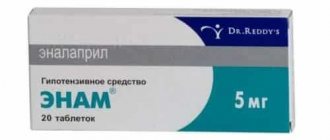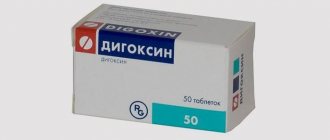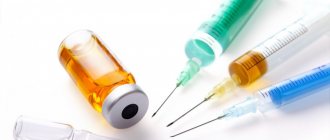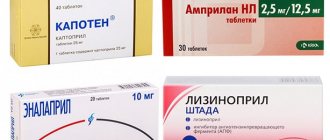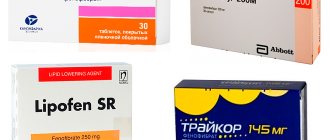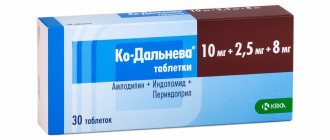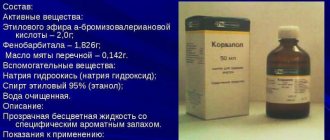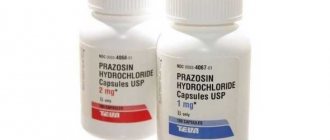Warfarin, the instructions for use of which show that this is a fast-acting modern drug that affects blood clotting in humans - this is a unique drug, or in other words, an indirect anticoagulant, which, unlike direct substances, actively acts on the synthesis of enzymes in the body and regulates blood clotting . Warfarin tablets normalize coagulation parameters and allow one to assess the main functions of the body, so this drug is prescribed to many patients to normalize blood composition. Direct anticoagulants are able to exert their “direct” effect only on thrombin, which leads to blood thinning. Therefore, patients with bleeding disorders should take Warfarin to change the consistency of the blood and normalize its parameters when taking direct anticoagulants.
The drug Warfarin is recommended for patients who have been found to have impaired blood clotting functions, as well as for patients at risk of developing blood clots in the body, because it is because of them, small blood clots, that people develop health-threatening diseases such as stroke, venous thromboebolism and so on. If these conditions are not treated and blood clotting is normalized, a person’s condition may deteriorate greatly, leading to the death of the patient.
General information about the drug Warfarin
Taking Vafnarin is determined by a wide spectrum of effects on the human body, since the composition of the drug contains unique components that can quickly combat blood clotting disorders. The composition of the drug includes warfarin sodium and auxiliary elements. Analogues of the medicinal drug are endowed with other components, but they also contain sodium warfarin, since this is the main active element.
Warfarin taken by patients is currently produced by different pharmaceutical companies, resulting in differences in the medicine between manufacturers, which is due to:
- dosage of one tablet;
- color of capsules;
- number of tablets in the package.
But they take the medicine the same way - before meals on an empty stomach. This is due to the fact that you also need to donate blood before eating, so as not to disturb the indicators. In this case, food is taken 1-3 hours after donating blood or after taking a pill.
The drug Warfarin is available in different forms:
- 3 mg tablets, folded in plastic bags, which are placed in special pharmacy containers;
- 2.5 mg capsules, produced in blisters (their quantity varies);
- Warfarin Nycomed, the instructions for use of which state that the drug is taken in case of increased bleeding disorders, when the taken drop cannot harden for a long time (this form is available in the form of 2.5 mg capsules);
- Warfarin Orion, available in capsules of 3 and 5 mg, which are placed in a special sterile bottle;
- Warfarin Sodium Clathrate, the composition of which differs slightly from other forms of Warfarin - this type can be used by any patient with blood clotting problems (this type of drug is available in powder form, which is sold in plastic bags and is needed to create non-sterile medicinal compositions).
The release forms of the drug are different:
- pills;
- powder.
Today, doctors prescribe only capsules to patients, since their use is easier and safer, and the composition of the medicinal products is the same.
Warfarin is quickly cleared from the stomach, absorbed into the walls of blood vessels, where its active action and subsequent treatment occur. The drug is metabolized in the liver. Residues of the drug are excreted with bile in the form of inactive metabolites, which are converted into the gastrointestinal tract and enter the urine. Therefore, it is important to take the pills correctly, because an increased dose leads to an overdose of warfarin sodium, which causes spasms of blood vessels and capillaries - in this case, you can’t expect a therapeutic effect from the medication.
Algorithm for warfarin saturation during heparin therapy.
| Prescribe heparin (unfractionated or low molecular weight heparin at a therapeutic dose) + warfarin at a dose of 5 mg for 2 days | |
| Measure INR on the third day | |
| INR | Action |
| < 1,8 | – Continue heparin at the therapeutic dose. – Increase the dose of warfarin by 1/2 tablet. – Determine INR after 1 day. |
| 1,8-2,0 | – Continue heparin at half the therapeutic dose. – Do not change the dose of warfarin. – Determine INR the next day. |
| 2,0-3,0 | – Discontinue heparin. – Do not change the dose of warfarin. – Determine INR in 1-2 days. Next, the dose of VKA is adjusted according to the standard regimen under the control of the INR. |
How to take the drug?
After a doctor prescribes Warfarin, it is important to learn how to take the tablets correctly, as they are considered highly effective and fast-acting. They should be taken in accordance with the prescribed dose, so as not to cause harm to the body, which manifests itself in the form of bleeding, spasms, and so on (these are the main signs of a drug overdose). If Warfarin is indicated for a patient throughout his life, it should be taken carefully and carefully.
The main rules for taking capsules:
- if taken regularly, be sure to constantly conduct a blood test for clotting - if the tablets do not give an effective result, treatment with Warfarin should be stopped;
- Capsules should be taken only in the dosage prescribed by the doctor, because it is selected individually, based on the characteristics of the patient’s body (changing the prescribed dosage is strictly prohibited);
- use Warfarin Nycomed, the instructions for use of which contain all the information about the drug, you only need one brand, which the patient chose at the first appointment - otherwise the treatment will be difficult and longer;
- take other dosage forms that are needed to maintain health (medicinal syrups, powders, etc.) - in this case, it is important to consult with your doctor whether you can take Warfarin along with a certain drug or whether you need to give it up during treatment;
- It is prohibited to take the medication together with vitamins or herbs;
- Warfarin and alcohol are incompatible concepts, so during treatment you should avoid drinking alcohol (the fact is that elements of alcoholic products penetrate into the blood and suppress the effect of the drug, and also negatively affect the condition of the liver when they enter its cavity along with the remains of the capsules) ;
- It is advisable to carry out a healthy diet during treatment, on which the result and speed of recovery depend, since the body will contain a lot of useful elements that, together with the blood flow, will be transported throughout the body, saturating it with the necessary substances;
- limit the intake of cranberry drinks (juice, compote), which are endowed with powerful diuretic and cleansing properties that can quickly remove tablets from the body until their substances have not yet been absorbed into the walls of the stomach;
- be sure to notify doctors (even the dentist) about taking the drug, since the role of Warfarin’s interaction with other drugs is significant;
- be sure to pay attention to all bleeding occurring in the body (uterine, bruising, bleeding gums) - if they appear, it is important to notify the doctor as soon as possible, as this indicates negative consequences occurring in the body;
- Carry out constant monitoring of the body and, if there are side effects or a sharp deterioration in the condition, immediately seek help from the hospital.
By following these rules, you can quickly normalize blood clotting rates and not cause harm to your health.
Frequently asked questions about warfarin treatment
1. Why is warfarin prescribed?
Warfarin is an anticoagulant - a drug that reduces blood clotting (the ability to form blood clots). Warfarin is prescribed in cases where the risk of unwanted blood clots is particularly high. The most common indications for prescribing warfarin: artificial heart valve, atrial fibrillation (the so-called “atrial fibrillation”), deep vein thrombosis, pulmonary embolism, sometimes after a heart attack, stroke, with thrombophilia (a disease in which blood clotting is increased and constantly appears). blood clots).
2. How does warfarin work?
Warfarin blocks part of vitamin K, from which prothrombin is synthesized in the liver, a substance necessary for the formation of blood clots. Vitamin K enters the body with food from green vegetables, and is also produced by bacteria living in the human intestines. Warfarin “neutralizes” part of vitamin K and the liver does not receive enough “building material” to create prothrombin. Warfarin does not dissolve existing blood clots.
3. How quickly does warfarin start and stop working after taking it?
Since warfarin interferes with the creation of new prothrombin without neutralizing the one already formed, its effect does not appear immediately. The effect of warfarin can be seen only in 3-5 days (when the previously created prothrombin is destroyed). It also takes 3-5-7 days for the liver to produce a sufficient amount of prothrombin after stopping warfarin, and blood clotting returns to normal.
4. Is warfarin dangerous? Will I have any side effects?
Warfarin is a serious drug. Failure to follow the rules for taking it can lead to serious complications. At the same time, when prescribing it, the doctor weighed the possible risks of warfarin and the risks without it, and came to the conclusion that there would be more benefit from warfarin than danger. In general, following the rules for taking warfarin and regularly monitoring blood clotting, in most cases, allows you to avoid serious complications.
5. When should you take warfarin?
The main condition is that warfarin must be taken every day, without skipping. Therefore, determine the time for taking warfarin for yourself when you will not forget to take it! In addition, you should always take warfarin at the same time and on an empty stomach. Food affects the absorption of warfarin, so it is better not to combine them. It is best to take warfarin once a day in the evening.
6. How long will I have to take warfarin?
This depends on the reason you were prescribed warfarin. For example, after installation of an artificial mechanical heart valve or with thrombophilia, warfarin will have to be taken for life. After some other heart surgeries or deep vein thrombosis, warfarin is usually prescribed for six months to a year.
7. What should I do if I forget to take warfarin?
Don't forget to take your next dose :). Under no circumstances take a double dose at your next dose! Just wait until your next dose and take your regular dose for that day.
8. I don't remember if I took warfarin. What should I do?
Nothing. If you skip one dose, there will be less harm than if you take a double dose. And in order to prevent this situation from happening again, use a pill bottle or put warfarin and other medications aside for the day in a separate box/jar. This way you will always know what you have already drunk and what you haven’t yet.
9. Should I somehow monitor the progress of warfarin treatment?
Yes, monitoring the progress of treatment is the basis of all basics. If you are not going to control your blood clotting, it is best not to start warfarin therapy at all. Treatment with warfarin is a constant balancing act between the risk of thrombosis and the risk of bleeding. And without regular tests it is impossible to maintain this balance.
About INR
10. What is INR?
INR (international normalized ratio) is one of the indicators of the blood coagulation system. It is sometimes referred to as “INR” in analyses. It is by this indicator that the effectiveness of warfarin treatment is determined.
11. What is the “target INR range”?
The normal INR for humans is about 1 (0.8 – 1.3). The purpose of prescribing warfarin is to reduce blood clotting to a level where the risk of thrombosis is significantly reduced, but the risk of bleeding is not yet too high. For different conditions, this balance point is between certain INR numbers. For example, with a mechanical heart valve, it is recommended to keep the INR between 2.5 and 3.5. These numbers are called the “target INR range”. This range may be different for different conditions.
12. How often should I check my INR?
At the stage of selecting the dose of warfarin, INR should be monitored every 3-5 days, after reaching the target range - once every 5-7 days, after receiving 3 consecutive tests in the target range, you can switch to measuring once every two weeks. In general, it is necessary to measure INR at least once a month, and preferably once a week or two. It is also necessary to check the INR if you change the dose of warfarin, change your diet, add new medications and other situations that could affect blood clotting. Remember that changes in INR levels will only be noticeable after 3-5-7 days.
13. What does it mean if my INR is BELOW the target range? What to do about it?
This means that the dose of warfarin is insufficient and there is a risk of thrombosis. In order to return to the range, you need to either reduce the amount of vitamin K in food or increase the dose of warfarin. It's better to start with the first one. If the INR has dropped below 1.6 (for a target range of 2.0-3.0) or 2.0 (for a target range of 2.5-3.5), you may need to temporarily add heparin or Clexane (ask your doctor!) .
14. What does it mean if my INR is ABOVE the target range? What to do about it?
This means that the dose of warfarin is excessive and the risk of bleeding is increased. It is necessary to either increase the intake of vitamin K from food or reduce the dose of warfarin. If the INR is no more than 4.0-4.5, then it is better to start with the first option. And only if the INR does not decline within a week, then reduce the dose of warfarin.
15. I can't seem to stay within my target range. Is it even possible?!
Maybe! It just takes time to learn how to regulate blood clotting. For this:
A. Monitor your INR regularly
b. Stick to a diet (see below)
V. To more accurately select the dose of warfarin, use combinations of tablets with different warfarin contents (2.5, 3 and 5 mg are available in Ukraine) and their parts.
d. Use an alternating regimen for taking warfarin: one dose one day, another - another, the third - the same as the first, etc. In this way, you can select the average daily dose more accurately.
d. Don't forget about the interactions of warfarin with medications, herbs, vitamins and foods!
e. Change the dose of warfarin very carefully, by 10-20% at a time and allow time for changes to appear (5-7 days).
16. For several tests in a row, my INR has been in the target range. Does this mean that the warfarin dose has been adjusted and I can stop checking my INR?
No, it doesn't mean that. INR monitoring is necessary while you are taking warfarin because clotting can vary significantly depending on external factors (food, medications, stress, etc.). Even if the indicator is stable, it is necessary to monitor the INR once a week or two and in no case less than once a month!
17. In what situations do I need an unscheduled INR check?
If there is reason to suspect or predict an exit from the target range. For example, if unmotivated large bruises appeared on the body, nosebleeds or other bleeding appeared. An unscheduled INR measurement is also necessary if your diet has changed radically or you have added/removed some medication that can affect the INR.
About lifestyle
18. Can I combine warfarin with other medications?
You can, but your warfarin dose may need to be adjusted. There is a whole list of drugs that enhance the effect of warfarin and no less those that weaken its effect. Always pay attention to the “drug interactions” section in the medication annotations and if warfarin is indicated there, be sure to check the INR 5 days after starting the drug and possibly change the warfarin dose. Don't forget to check your INR and return to your original warfarin dose after you finish taking the new drug.
19. I periodically take herbs/vitamins/dietary supplements. Could this have any effect on warfarin?
Maybe! Many vitamins (eg vitamin C, vitamin E) affect the action of warfarin. Many multivitamins contain small amounts of vitamin K, which means they significantly reduce the effect of warfarin. When choosing multivitamins, pay attention to this; take those that do not contain vitamin K. The same applies to many herbs and dietary supplements. Before taking them, think carefully about whether the expected benefit from taking them is so great as to risk “shaking” the INR. And if you still decide to take herbs/vitamins/dietary supplements, be sure to check your INR 5-7 days after they start and after they end.
20. Do I have to follow any special diet while taking warfarin?
Yes, there are certain dietary rules for people taking warfarin. They consist in the fact that there should be a stable content of vitamin K in food every day. It can be high or low, it doesn’t matter, the main thing is that it is approximately the same every day! Green vegetables and green tea contain the most vitamin K.
21. Should I change my lifestyle if I take warfarin?
Sometimes yes. To avoid dangerous bleeding, you should avoid activities and entertainment that involve an increased risk of injury (contact sports, working with cutting objects, or with a high risk of falling, even from your own height).
22. I want to go on a trip/hiking. Will warfarin therapy interfere with this?
Basically no. Just remember to take an adequate supply of warfarin with you and check your INR before leaving. Don't forget about your diet - when traveling, food often differs significantly from usual, and this can affect the INR. It is better to avoid long (more than 2 weeks) trips unless there is an opportunity to check the INR (with a portable device or at the nearest hospital). Also, always have a card/piece of paper with you indicating that you are taking warfarin and for what indications.
23. I want to get pregnant and have a baby. Would warfarin interfere with this?
Unfortunately it will interfere. Warfarin is extremely harmful to the baby, so if you are planning a pregnancy, discuss with your doctor the possibility of replacing warfarin with heparin during pregnancy.
24. Should I tell doctors that I am taking warfarin?
Yes, it is necessary, since many manipulations cannot be carried out with warfarin or require special training or support. Be prepared for the fact that doctors in some specialties may not know what warfarin is and what risks it carries, so it is better to have the instructions for the drug with you.
25. I am about to have an operation or other medical procedure. What to do with warfarin?
It all depends on how traumatic the manipulation is. For any operation, warfarin will have to be temporarily removed, perhaps replaced with heparin for a while. The same applies to such manipulations as gastroscopy, bronchoscopy, etc. Tooth extraction may require a dose reduction or discontinuation of warfarin. Other dental manipulations can be carried out without changing the dose of warfarin, but you should be prepared for prolonged bleeding from the gums, etc.
26. In what situations should I consult a doctor immediately?
a. If you have had an injury to the abdomen, chest, or head. Even if you feel well, but the blow can be described as severe, it is better to go to the hospital and make sure that there is no internal bleeding.
b. If you notice blood in your sputum, stool, urine, or if you are vomiting blood. You should also consult a doctor if you have nosebleeds that do not stop within 10-15 minutes.
c. If you have numerous large bruises on your body.
d. If you suddenly have headaches, weakness in one half of the body, blurred vision, speech impairment, abdominal pain, etc.
In each of these cases, be sure to tell your doctor that you are taking warfarin and your latest INR value.
27. Can I combine warfarin with alcohol?
You can, but it is not advisable to do so. Alcohol, by affecting the liver, enhances the effect of warfarin. In addition, even small doses of alcohol impair coordination and increase the risk of accidental injury, which can be life-threatening in a person taking warfarin.
TO MAKE AN APPOINTMENT WITH A SPECIALIST AT OUR MEDICAL CENTER, PLEASE CLICK HERE
Advantages of the drug and its side effects
Warfarin, the indication for use of which is impaired blood clotting, has a number of side effects on the human body. These include:
- nausea;
- diarrhea;
- bleeding;
- anemia (lack of iron in the body);
- abdominal pain localized in the upper part;
- vomiting after taking the pill;
- jaundice appearing on the face and neck;
- increased sensitivity to the components of the drug after long-term use;
- the appearance of rash, hives and itching;
- eczema;
- skin necrosis;
- nephritis;
- hair loss;
- vasculitis.
If a patient has indications for the use of Warfarin, it is worth paying attention to these side effects, which often cause severe deterioration of the condition.
What causes skin rashes when taking pills and what consequences do they have for the body? Skin rash, itching and urticaria are characterized by a high increase in the concentration of enzymes located in the liver, which leads to the appearance of cholestatic hepatitis, priapism, alopecia and vasculitis in the patient. It is possible to remove these rashes only after treating blood clotting and normalizing its parameters.
How to take pills correctly? Warfarin should be taken once a day in the dosage prescribed by the doctor. It is advisable to take capsules at the same time. You need to take the drug on an empty stomach - you should eat 3-4 hours before taking the medicine.
Important: taking this medication during pregnancy is prohibited, but taking it during breastfeeding is allowed. The result of treatment is noticeable after 2-5 doses of the drug, but to consolidate blood clotting indicators, it is worth taking Warfarin for a full course, which lasts 2-3 weeks. Some patients, for health reasons, need to take the medicine throughout their lives.
Blood clots that develop in blood vessels cause strokes, heart attacks and other dangerous pathologies in people, leading to death or disability. Therefore, the main advantage of Warfarin is the ability to save a person’s life and prevent disability in people who are at risk of developing blood clots in their blood vessels.
Important: if the treatment result is ineffective, it is worth replacing the medication, since it is important to normalize blood clotting in a short time.
Side effects of Warfarin
During treatment, the following side effects of Warfarin may occur:
- bleeding - often;
- increased sensitivity to Warfarin after prolonged treatment;
- abdominal pain, vomiting, diarrhea , anemia - uncommon;
- increased activity of liver enzymes, eosinophilia , urticaria , jaundice , eczema, necrosis , itching, rash, nephritis , urolithiasis , vasculitis , tubular necrosis - rarely.
Bleeding occurs in approximately 8% of patients receiving Warfarin. Of these cases, 1% are severe, requiring hospitalization, and another 0.25% are defined as fatal. The main risk factor for the development of intracranial hemorrhage is uncontrolled or untreated hypertension. Also, the likelihood of treatment with Warfarin increases in elderly people, with a history of gastrointestinal bleeding and strokes, with high intensity of concomitant anticoagulant and antiplatelet treatment, as well as in people with polymorphism of the CYP2C9 gene.
, coumarin necrosis may occur as a side effect of warfarin therapy . As a rule, this phenomenon begins with the appearance of swelling and darkening of the skin of the buttocks or legs, less often such signs appear in other places. Later such lesions become necrotic. In approximately 90% of cases, this side effect develops in women. It is observed from the third to tenth day of taking the medicine. Its origin is associated with a deficiency of antithrombotic protein C or S. In case of congenital deficiency of these proteins, it is necessary to start taking Warfarin with small doses and simultaneously administer heparin . If such a complication develops, treatment should be stopped and heparin administered until the lesions heal.
In very rare cases, hand-foot syndrome . This complication develops in men who suffer from atherosclerosis . This complication is characterized by the development of purple, symmetrical skin lesions on the soles of the feet and on the toes, which are accompanied by burning pain. Symptoms disappear when the medication is stopped.
Indications for use of Warfarin
Doctors advise taking this medicine to people whose bodies are prone to the formation of blood clots and embolism. In addition, the drug is prescribed to patients who are experiencing the formation of blood clots in their vessels to prevent their ruptures.
Warfarin is currently prescribed to people to treat conditions such as:
- varicose veins;
- thrombophlebitis;
- haemorrhoids;
- thrombophlebitis;
- acute venous thrombosis;
- postoperative thrombosis;
- myocardial infarction (especially repeated);
- postoperative introduction of hemostatic agents into the body;
- formation of a blood clot in the lung cavity;
- thrombosis developing in peripheral, coronary and cerebral arteries;
- introduction of valves into the heart muscle (prosthetics).
The conditions described above are considered life-threatening, so special attention should be paid to them during treatment. However, you should not increase the dosage of Warfarin, as in this case the course of the disease will worsen and become more acute.
What is thromboembolism? This is a blockage of blood vessels by a blood clot that can occur in any part of the body - in the lungs, heart or brain. With the development of this pathology, a blockage of blood vessels occurs, characterized by impaired blood circulation, which is considered dangerous to human health.
How to take the drug - dosage of the drug
Important: before you start taking Warfarin, you should keep a special notebook with a table in which you enter data on the dosage, time of taking the pill and the date it was taken. After all, it is recommended to take the drug at the same time.
The tablet should be taken before meals every day, without skipping a dose - otherwise the drug will not be able to act properly on the body. You need to drink the capsule with plenty of water, without crushing it or chewing it. If a doctor has prescribed Warfarin in powder form, it should be diluted with lukewarm boiled water in a strict dosage, then mix the liquid thoroughly. You need to drink the powder immediately, without leaving it to infuse.
Monitoring PTI and INR during treatment with Warfarin
Before starting to take the drug, the doctor conducts a PTI and INR for each patient. What are they and how do their indicators affect the treatment process?
PTI is the prothrombin index. In other words, this is time, or more precisely, its ratio in a healthy person and a patient.
INR is an international normalized ratio, that is, taking into account the patient’s prothrombin time to the standards of the same period.
When conducting both tests, the doctor also takes into account the condition of the body, which can affect the final results. Normally, the results of PTI in a person are 70-100 units. At the same time, the drug reduces these indicators to 24-42 units. If Warfarin, on the contrary, increases the test results, then the patient has a significantly increased risk of developing a stroke. If the levels are low, severe bleeding may develop, often leading to death.
As soon as the patient starts taking the capsules, after 5 days he will again need to undergo both tests to assess the condition of the body and possible improvements in blood clotting. If there is practically no result, the doctor can adjust the dosage of the drug, which will depend on the INR values.
Important: if after treatment the INR level is very high (from 2.5 to 3.5), treatment should be continued only for diseases such as:
- atrial fibrillation;
- pathologies of the heart valves;
- prosthetics of the heart muscle with bioprostheses;
- venous thrombosis;
- therapy in the treatment of pulmonary embolism.
For those patients who have not previously taken Warfarin, doctors advise taking an initial dose of the drug, which is 5 mg. Typically, such treatment lasts 4 days, after which the patient is required to undergo appropriate tests, and, based on their results, the doctor will prescribe a new acceptable dosage. Usually it is 2.5-7.5 mg per day, which is 1-3 capsules. In the absence of a positive effect of the drug on the body, the doctor comes to the conclusion that the daily dosage should be increased, but it must be calculated correctly so that the dose does not harm the body, because taking more than 3 tablets per day is prohibited.
How and in what quantity is warfarin prescribed?
The instructions for use of warfarin explain in detail how and in what quantities it is permissible to take the drug. Most often it is prescribed in tablets, once a day every day, preferably at the same time (usually 17:00), so that the intervals between tablets are approximately the same. The duration of therapy is determined by the attending physician.
Before starting treatment, possible contraindications are carefully assessed, and the INR (international normalized ratio), which characterizes the state of hemostasis, is determined. When taking warfarin for a long time, the INR must be constantly monitored by testing at least once a month. If necessary, the drug can be discontinued immediately, without a period of dosage reduction.
The target indicators of blood clotting during treatment with warfarin are considered to be an increase in prothrombin time up to 4 times, an INR in the range of 2.2-2.4 , depending on the nature of the pathology, the likelihood of thrombosis and bleeding.
If the patient has never used warfarin before, then the initial dose is 5 mg per day for the first four days of treatment. On day 5, the patient donates blood for an INR test, depending on the values of which the maintenance dosage is determined, usually up to three tablets (up to 7.5 mg per kg of weight).
In cases where there is already experience in using an anticoagulant, the doctor prescribes a starting dose for the first two days of use, which is double that taken previously. From the third day, therapy is carried out with the maintenance dose that the patient has already taken. On day 5, the INR is determined and, if necessary, the amount of medication is adjusted.
For the prevention and treatment of thrombus formation in the veins, pulmonary embolism, arrhythmia, damage to the heart valves, as well as after transplantation of biological valves, the recommended INR value is within 2-3 .
With a higher risk of thrombosis after transplantation of synthetic valves, in the case of complicated forms of myocardial infarction, the INR should be higher - 2.5-3.5 .
Children are a special category of patients whose use of warfarin is limited and is carried out under the strict supervision of a physician. The starting dose is 0.2 mg per kg daily if the liver is functioning normally, otherwise it is halved to 0.1 mg/kg. The maintenance dosage is set depending on blood clotting parameters. The target INR level for treatment is the same as for adult patients.
At each stage of the child taking warfarin, clotting is monitored and the dose of the medication is adjusted. As the INR increases, it decreases until it is completely canceled when it exceeds 3.5, and then the intake continues in a reduced amount.
Elderly patients often take warfarin tablets for a long time and even for life; there are no specific recommendations (except for a possible dose reduction) for therapy in this category of patients, however, constant monitoring is the key to safe treatment, since the risk of adverse reactions increases with age.
Disorders of the liver can change the effect of the drug, since the organ synthesizes coagulation factors, but with pathology there are fewer of them, and sensitivity to warfarin is higher. The dose is selected according to the INR and is often lower than that prescribed in accordance with age and pathology.
Kidney disease, on the contrary, does not in any way affect the anticoagulant treatment regimen; the dosages are as recommended by the instructions and the doctor. Peritoneal dialysis for chronic renal failure also does not require treatment adjustment.
The drug dosage regimen changes if the patient requires elective surgery. Since warfarin reduces blood clotting, the risk of bleeding becomes significantly higher, therefore, a week before the planned intervention, the INR is determined, and warfarin is discontinued approximately 2-5 days depending on its level. In case of risk of thrombosis, it is replaced with heparin administered subcutaneously.
During and after surgery, the risk of thrombosis is eliminated by the administration of heparin, which is used in the postoperative period in parallel with the restoration of warfarin under strict control of coagulation.
Contraindications to taking the drug
Warfarin is strictly prohibited for people who are prone to frequent bleeding, as well as for people with anemia. In addition, it is not recommended to take the medicine:
- during pregnancy;
- during breastfeeding;
- when taking certain groups of medications that are not compatible with Warfarin;
- patients who, for health or physical reasons, cannot often take blood tests, which leads to a lack of control of the level of coagulation;
- patients who are unable to control their medication intake or correctly calculate the dosage;
- in the presence of dangerous and severe pathologies of the kidneys and liver;
- during menstruation;
- with arterial hypertension (advanced form);
- with an aneurysm;
- with high sensitivity to the components of the drug;
- during surgery (cranial and ophthalmological operations).
If you have these diseases, it is important to stop taking Warfarin and replace it with a more gentle treatment.
Contraindications
Before taking medications, you need to take into account the contraindications that are indicated in the instructions for the drug:
- manifestation of high sensitivity to the components of the product or suspicion of hypersensitivity;
- acute bleeding;
- severe liver and kidney diseases;
- the first trimester of pregnancy and the last 4 weeks of gestation;
- acute DIC syndrome;
- thrombocytopenia;
- lack of proteins C and S;
- varicose veins of the digestive tract;
- aneurysm ;
- increased risk of bleeding, including hemorrhagic disorders ;
- stomach and duodenal ulcers;
- severe wounds, including post-operative wounds;
- lumbar puncture;
- bacterial endocarditis;
- hypertension malignant;
- intracranial hemorrhage;
- hemorrhagic stroke.
Use of the drug during pregnancy and lactation
It is prohibited to take the drug in the first trimester, since Warfarin quickly penetrates the placenta, thereby having a negative effect on the fetus:
- development of cataracts;
- optic nerve atrophy leading to complete blindness;
- chondrodysplasia;
- fetal delay in physical and mental development;
- microcephaly.
In subsequent trimesters, the medication can be taken only if absolutely necessary. Important: if Warfarin is taken until the end of pregnancy, it can cause increased and heavy bleeding during childbirth, which is often dangerous for the woman’s health.
During breastfeeding, the drug is absorbed into breast milk in the same amount and penetrates the baby’s body, but it does not affect his blood clotting in any way. Therefore, the tablets can be taken during lactation.
Life along with constant use of Warfarin
If a person, for health reasons, needs to constantly take the drug, namely, for the rest of his life, then he will have to regularly undergo tests and tests so that the doctor can assess the condition and indicators of blood clotting.
Also, constant tests and monitoring are needed in order to understand that the drug “works” safely in the patient’s body. Also, the patient should always remember what tests he performed the day before and what he needs to take, because this is the only way to evaluate the quality of treatment and check the level of coagulation in the body.
If you take pills regularly, you need to systematically visit a doctor who will evaluate tests and the general condition of the body - on average, you need to visit the doctor once a month.
Warfarin price, where to buy
Price Warfarin Nycomed – from 115 rubles. per pack 50 pcs. Packing of tablets 100 pcs. costs on average 180 rubles.
- Online pharmacies in RussiaRussia
- Online pharmacies in UkraineUkraine
- Online pharmacies in KazakhstanKazakhstan
ZdravCity
- Warfarin tablets 2.5 mg 100 pcs. JSC Canonpharma Production
100 rub. order - Warfarin-obl tab. 2.5 mg No. 50AO Obolenskoe farm. company
104 rub. order
- Warfarin-OBL tablets 2.5 mg 100 pcs. JSC Obolenskoe farm. company
126 rub. order
- Warfarin Nycomed tablets 2.5 mg 100 pcs. Takeda Pharma Sp. z o.o.
RUB 153 order
- Warfarin tablets 2.5 mg 100 pcs. OzonOzon LLC
94 RUR order
Pharmacy Dialogue
- Warfarin (2.5 mg tablet No. 50) Ozon LLC
62 RUR order
- Warfarin Nycomed (2.5 mg tablet No. 50)Nycomed
98 RUR order
- Warfarin Nycomed (2.5 mg tablet No. 100)Takeda
RUB 158 order
- Warfarin Nycomed (2.5 mg tablet No. 50)Takeda
91 rub. order
- Warfarin (2.5 mg tablet No. 100)Canonpharma Production
97 RUR order
show more
Pharmacy24
- Warfarin-FS 2.5 mg N100 tablets Pharma Start TOV, Ukraine
78 UAH order - Warfarin-FS 3 mg No. 100 tablets Pharma Start TOV, Ukraine
91 UAH order
- Warfarin 2.5 mg No. 100 tablets Takeda Pharma A/S, Denmark/Takeda Pharma Sp.z.o.o., Poland
105 UAH order
PaniPharmacy
- WARFARIN tablets Warfarin tablets. 3mg No. 30 Finland, Orion
80 UAH order
- WARFARIN tablets Warfarin tablets 5 mg No. 100 Finland, Orion
185 UAH order
- WARFARIN tablets Warfarin Nycomed tablets 2.5 mg No. 100 Denmark, Takeda Pharma
110 UAH order
- WARFARIN tablets Warfarin tablets 3 mg No. 100 Ukraine, Pharma Start LLC
98 UAH order
- WARFARIN tablets Warfarin tablets. 3mg No. 100 Finland, Orion
190 UAH order
show more
Diet while taking Warfarin
Cabbage and the brassica family are the main source of vitamin K, which significantly affects INR levels and reduces the effect of the drug.
Important: many products interact with Warfarin, thereby affecting the effectiveness and quality of the “work” of the drug. Therefore, the main thing for a sick person is to be consistent when choosing foods, as well as constantly monitor their quality and not overeat.
Each patient should ask the doctor what foods can be taken during treatment and what should be avoided. Important: there is no need to make drastic changes in diet that could affect the quality of treatment. A new product, for example, mashed potatoes, should be introduced into the diet gradually, starting with a small dose.
Constant consumption of vitamin K also affects the effectiveness of treatment, but its complete absence leads to bleeding, so the patient must completely balance the foods so that they saturate the body and benefit it. You need to eat food in a certain dose, without overeating. It is advisable to eat a comprehensive diet, since in this way you can quickly improve your health and normalize blood clotting.
In order not to look for healthy and approved foods, doctors recommend adhering to a special diet that is suitable for all patients undergoing warfarin treatment.
Application and laboratory control
Indirect anticoagulants are used to prevent progression or prevent relapses of venous thrombosis and pulmonary embolism after a course of heparin therapy. They are successfully used for the prevention of venous thrombosis and pulmonary embolism after operations on the pelvis, bones and joints, as well as for the prevention of embolism of the arteries of the systemic circulation during myocardial infarction, heart valve replacement and atrial fibrillation. Detailed recommendations for the use of indirect anticoagulants in various clinical situations have recently been published (Proceedings of the American College of Chest Physicians 5th Consensus Conference on Antithrombotic Therapy, 1998).
Before prescribing indirect anticoagulants, a clinical and laboratory search should be carried out for conditions that increase the risk of complications (hereditary deficiencies of coagulation factors, thrombocytopenia, liver and kidney failure, vascular anomalies, etc.). To monitor the regularity and effectiveness of treatment, INR is used. The therapeutic values of this indicator, which reduce the risk of thrombosis and embolism, while slightly increasing the likelihood of bleeding, have been established empirically.
In most cases, it is enough to increase the INR to 2-3; a higher INR level is recommended for patients with prosthetic heart valves (Hirsh et al., 1998b).
In the treatment of acute venous thrombosis and PE, after adding indirect anticoagulants to heparin, heparin therapy is continued for at least 4-5 days until the INR level stabilizes at a therapeutic level for 2 days in a row. This is necessary to deplete the supply of long-lived clotting factors, especially prothrombin. At the beginning of treatment, MNO should be determined daily to avoid overdose in patients with hypersensitivity to coumarins. Once the INR level has stabilized, the interval between laboratory tests can be gradually increased to weekly and then monthly.
To monitor treatment, blood is taken on an empty stomach 8-14 hours after taking the drug. Previously, the result was assessed by the ratio of PT of the patient and in the donor plasma sample. However, this indicator is highly dependent on the thromboplastin used and laboratory equipment. PT is prolonged by decreasing levels of fibrinogen, factor V and vitamin K-dependent factors (prothrombin, factors VII and X). A decrease in the level of factor IX, proteins C and S does not affect P V. Attempts to standardize laboratory controls in the mid-1980s led to the development and implementation in the 1990s. an indicator called the international normalized ratio - INR. This indicator is calculated as follows:
INR = (PVb/PVst)ISI
where PVb is the patient’s PV; PVST - standard plasma PV; ISI - international sensitivity index.
The value of the international sensitivity index is indicated by the thromboplastin manufacturer. This index reflects the ratio of the PT determined using a given thromboplastin to the PT determined using the WHO standard thromboplastin. The lower this value is, the more sensitive the test is to the action of indirect anticoagulants (that is, the longer the PT is prolonged against the background of these drugs). Ideally, the laboratory should test each batch of thromboplastin on standard plasma samples so that the result does not depend on the characteristics of the equipment used and the research methodology.
After the introduction of INR as a standard, it was found that the sensitivity of the test was lower when using rabbit thromboplastin (commonly used in North American laboratories). This has led to the prescription of larger doses of indirect anticoagulants than previously recommended based on clinical trials using human brain-derived thromboplastin. Thus, the optimal INR (2-3) corresponds to a ratio of PT values of 1.2-1.5 when using rabbit thromboplastin and 2-3 when using human thromboplastin.
If a patient has a lupus anticoagulant, one cannot rely on the INR level, since the values of PT and other indicators of blood coagulation that depend on phospholipids are initially increased. In such cases, treatment outcome is assessed by anti-Xa activity or prothrombin-proconvertin time (Moll and Ortel, 1997).
Special instructions for drug treatment
Patients with bleeding disorders must take the drug daily in the dose prescribed by the doctor. At the same time, do not forget about the regimen of taking pills and proper nutrition. If the patient develops fever or hyperthyroidism, it is not necessary to complete treatment, since these pathologies enhance the effect of Warfarin. However, it is important to notify the doctor about them so that he can examine the body and determine its condition.
Paracetamol, opiates and tramadol can be taken as painkillers for bleeding disorders.
People with galactose intolerance or impaired absorption of glucose from the gastrointestinal tract are prohibited from taking the drug.
When a rapid effect of treatment occurs, it is worth completing the course along with taking heparin, thanks to which the level can be controlled by the INR level (if it remains unchanged for 2 days, then the treatment is considered complete).
It is important to treat elderly patients with caution, since these patients often experience an enhanced effect as a result of a decrease in hepatic metabolism in the body. In this case, the patient requires special care and constant monitoring.
What foods should you exclude from your diet while taking Warfarin?
It is imperative to exclude green foods (vegetables and fruits) from your daily diet. It is also important to stop consuming vitamin K, which is found in many “popular” foods:
- cabbage (any type);
- onion;
- spices (cilantro, coriander);
- kiwi;
- cucumbers;
- green salad;
- mint;
- mustard;
- fresh herbs;
- olive oil;
- legumes
It is also important to limit the consumption of foods that increase the risk of bleeding while taking Warfarin. There are products that may increase the risk of bleeding when taken together with warfarin. These include:
- medicinal plants (chamomile, rose hips, sage root, dandelion);
- fruits and berries - grapefruit, cherries, strawberries, currants, lingonberries;
- garlic;
- echinacea;
- vitamin E.
Description of the drug
Warfarin is an anticoagulant. This is a medicine that stops blood clotting.
The drug is given to people if they are at risk of developing a blood clot (thrombosis) or if they have already developed a thrombosis and need treatment.
Warfarin is used to treat and prevent the following diseases:
- deep vein thrombosis of the lower extremities (formation of blood clots in the veins of the legs);
- pulmonary embolism (blood clot in the lungs);
- some transient ischemic attacks (transient ischemic attack or "mini-stroke") or strokes, especially those caused by an irregular heartbeat known as atrial fibrillation.
How long you take warfarin depends on the condition for which it was prescribed. If you are not sure, ask your healthcare provider.
You will also be given a yellow anticoagulant leaflet which explains the treatment.
— How does it all work?
Vitamin K is produced in the blood, which helps it clot. Warfarin interrupts the activation of vitamin K in the body, thereby increasing the time it takes for blood to clot. This is sometimes called "blood thinning."
Warfarin helps blood flow freely around the body and stops clots from forming in the heart or blood vessels.
What foods are recommended to eat?
All of the above products can be present in the diet if the patient controls himself and takes these ingredients in minimal quantities. In addition, during their use it is worth constantly monitoring the level of blood clotting.
Important: the compatibility and dose of a certain product that a patient can eat depends on the dose of the drug, so it is better to consult with your doctor in advance about the correct intake of a certain group of products.
Every patient must remember that a certain ingredient must be included in the diet gradually - then it will not cause harm to health and the body. The patient can drink kvass, eat honey and fruits, drink coffee drinks or cranberry juice - but this must be in moderation. If the patient ate a green salad or other product in large quantities, then his INR level will increase in a short time, which will be noticeable in the tests. In this case, the doctor may think that treatment with Warfarin is ineffective and does not cause harm to the patient, so it is better to follow a diet in order to quickly get rid of impaired blood clotting and return normal values.
Instructions for use WARFARIN
It is not recommended to start or stop taking other medications, or change the dosage of medications taken, without consulting your doctor. When prescribing simultaneously, it is also necessary to take into account the effects of stopping the induction and/or inhibition of the action of Warfarin by other drugs.
The risk of severe bleeding increases when taking Warfarin simultaneously with drugs that affect platelet levels and primary hemostasis:
- acetylsalicylic acid, clopidogrel, ticlopidine, dipyridamole, most NSAIDs (except COX-2 inhibitors), penicillin antibiotics in high doses.
You should also avoid the combined use of Warfarin with drugs that have a pronounced inhibitory effect on the cytochrome P450 system, for example, cimetidine and chloramphenicol, when taken for several days the risk of bleeding increases. In such cases, cimetidine can be replaced, for example, with ranitidine or famotidine.
The effect of Warfarin may be enhanced when taken simultaneously with the following medications; Acetylsalicylic acid, allopurinol, amiodarone, azapropason, azithromycin, alpha and beta-interferon, amitriptyin, bezafibibrat, vitamin A, vitamin E, glibenclamide, glucagon, hemfibrosil, heparin, Grepafsacin, Danazole, derthoproopen, diazopoxin, digoxyide, digoxid , dizopiramid, disulfits, zafirlukast, indomethacin, ifosfamide, itraconazole, ketoconazole, clarithromycin, clofibrate, codeine, levamisole, lovastatin, methovasone, methotrexate, metronidazole, miconazole (including in the form of oral gel), nalidixic acid, norfloxacin, ofloxacin, omeprazole, oxyphenbutazone, paracetamol (especially after 1-2 weeks of continuous use), paroxetine, piroxicam, proguanil, propafenone, propranolol, influenza vaccine, roxithromycin, sertraline, simvastatin, sulfafurazole, sulfamethizole, sulfamethoxazole-trimethoprim, sulfafenazole, sulfinpyrazone, sulindac, steroid hormones ( anabolic and/or androgenic), tamoxifen, tegafur, testosterone, tetracyclines, thienylic acid, tolmetin, trastuzumab, troglitazone, phenytoin, phenylbutazone, fenofibrate, feprazone, fluconazole, fluoxetine, fluorouracil, fluvastatin, fluvoxamine, flutamide, quinine, quinidine, chloral hydrate , chloramphenicol, celecoxib, cefamandole, cephalexin, cefmenoxime, cefmetazole, cefoperazone, cefuroxime, cimetidine, ciprofloxacin, cyclophosphamide, erythromycin, etoposide, ethanol.
Preparations of some medicinal plants (official or unofficial) can also enhance the effect of Warfarin:
- for example, ginkgo (Ginkgo biloba), garlic (Allium sativum), angelica sinensis (Angelica sinensis), papaya (Carica papaya), sage (Salvia miltiorrhiza);
- and reduce: for example, ginseng (Panax ginseng), St. John's wort (Hypericum perforatum).
Warfarin and any St. John's wort preparations should not be taken at the same time, but it should be taken into account that the inducing effect of Warfarin may persist for another 2 weeks after stopping the use of St. John's wort preparations. If the patient is taking St. John's wort preparations, MHO should be measured and discontinuation. MHO monitoring must be careful because... its level may increase when St. John's wort is discontinued. After this, Warfarin can be prescribed.
Quinine contained in tonic drinks can also enhance the effect of Warfarin.
Warfarin may enhance the effect of oral sulfonylurea hypoglycemic agents.
The effect of Warfarin may be weakened when taken simultaneously with the following drugs:
- azathioprine, aminoglutethimide, barbiturates, valproic acid, vitamin C, vitamin K, glutethimide, griseofulvin, dicloxacillin, disopyramide, carbamazepine, cholestyramine, coenzyme Q10, mercaptopurine, mesalazine, mianserin, mitotane, nafcillin, primidone, retinoid, ritonavir, rifampicin, rofecoxib, spironolactone, sucralfate, trazodone, phenazone, chlordiazepoxide, chlorthalidone, cyclosporine. Taking diuretics in the case of a pronounced hypovolemic effect can lead to an increase in the concentration of clotting factors, which reduces the effect of anticoagulants. In the case of combined use of Warfarin with other drugs indicated in the list below, it is necessary to monitor MHO at the beginning and end of treatment, and, if possible, after 2-3 weeks from the start of therapy.
Foods rich in vitamin K weaken the effect of Warfarin; Decreased absorption of vitamin K caused by diarrhea or laxatives potentiates the effect of warfarin. Most vitamin K is found in green vegetables, so when treating with Warfarin, you should eat the following foods with caution:
- amaranth greens, avocado, broccoli, Brussels sprouts, cabbage, canola oil, chayo leaf, onion, coriander (cilantro), cucumber peel, chicory, kiwi fruit, lettuce, mint, mustard greens, olive oil, parsley, peas, pistachios, red seaweed, spinach greens, spring onions, soybeans, tea leaves (but not tea drink), turnip greens, watercress.
